ENVIRONMENTAL CRIME PROBE
Two years after UPL chemical inferno outside Durban, still no sign of a criminal trial
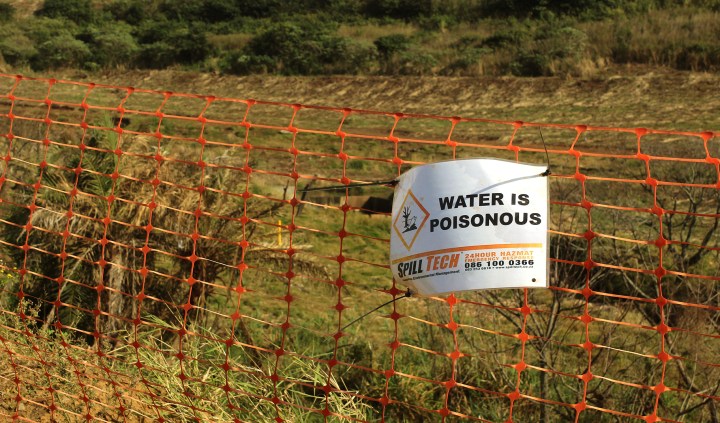
It has been more than two years since a massive flood of pesticides and other toxic chemical residue spilt from a warehouse to poison fish, soil, air, water and the marine environment north of Durban. Yet there is no indication that the UPL group will be appearing in court any time soon to face criminal charges.
The Mumbai-based company – the fifth largest agrochemicals company in the world after Bayer, Corteva, Syngenta and BASF – has argued from the outset that it was a victim of deliberate arson at the height of the July 2021 riots.
The company’s security measures and “state-of-the-art safety features” at its brand-new Cornubia chemical warehouse were simply overwhelmed. Large volumes of water used by firefighters also caused toxic chemicals to “overrun catchment devices”, the company said in a statement five days after the chemical leak and explosion.
In other words, it was just one of those very unfortunate incidents and the company was not to blame.
But that was not the view held by many members of the public – or the Green Scorpions (the government’s special environmental management inspectorate) which presented a criminal docket to the Director of Public Prosecutions on 20 June 2022.
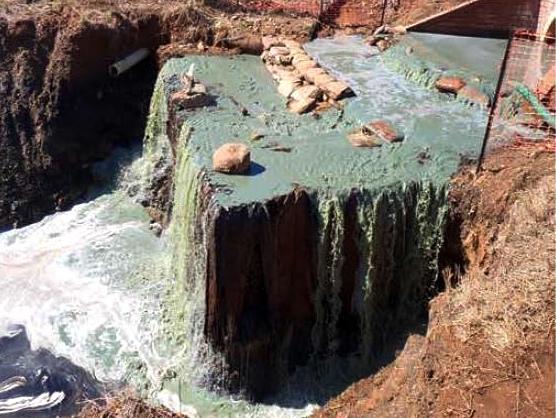
A torrent of contaminated water spills from drains in the vicinity of the UPL warehouse soon after the fire. (Photo: Supplied)
It is understood that the case docket recommends the prosecution of UPL on a range of criminal charges in terms of the National Environmental Management Act (Nema), the National Water Act, the Major Hazard Installation Regulations and other laws or regulations.
Yet more than a year after the docket was finalised, the National Prosecuting Authority has not laid any formal criminal charges against UPL or indicated whether it is negotiating a plea and sentence agreement with the company in terms of Section 105 of the Criminal Procedure Act.
While the Green Scorpions docket remains under wraps, the basis for some of the charges was laid out in a preliminary investigation by a multidepartment investigative report published two months after the fire.
In this preliminary report, several national, provincial and local government departments note that adherence to such laws goes to the very heart of ensuring human safety and protection of the environment.
Leaving aside the immediate cause of the fire, they asked whether the severity of the environmental pollution or threats to public safety could have been avoided – or at least minimised – if UPL had initiated mandatory public safety risk assessments or put in place more effective anti-pollution measures.
For example, what measures were in place to trap water-borne poisons from pouring out of a storage facility containing more than 5,000 tonnes of chemical products, many of which were highly toxic and subsequently wiped out nearly four tonnes of fish in the Umhlanga Lagoon and potentially contaminated underground water for decades to come?
More than two years later, a line of dead trees marks the trail of destruction to vegetation and freshwater aquatic life from the torrent of chemical pollution that began on 12 July 2021, while large sections of the Umhlanga Lagoon Nature Reserve remain closed to the public. (see photo)
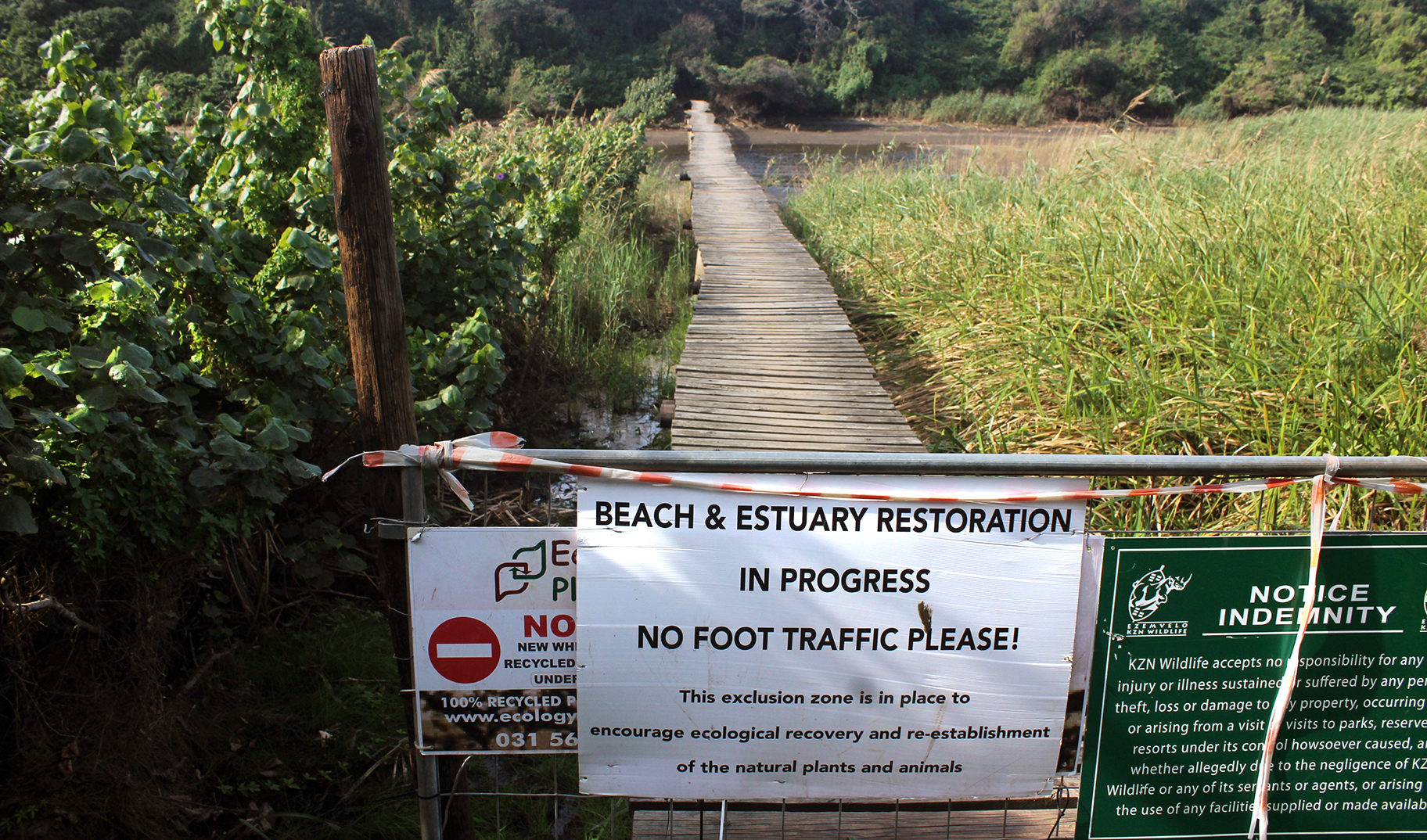
Sections of the Umhlanga Lagoon Nature Reserve remain closed to visitors. (Photo: Tony Carnie)
Marine and estuarine researchers Nicolette and Anthony Forbes reported two months ago that while there are some early signs of ecological recovery in the Umhlanga estuary, traces of pesticides from the UPL warehouse are still being detected in the estuary and on beaches near the river mouth.
They fear that these pesticides (along with municipal sewage leaks) may be affecting the recovery of fish, prawns and other estuarine life.
Could this have been avoided if the UPL warehouse had chemical containment ditches?
Durban’s petroleum refineries incorporate deep concrete ditches (bunding) to capture the accidental spillage of toxic products from several large storage tanks. But there is no evidence from aerial or drone photographs that UPL’s Cornubia warehouse had any such safety structures specifically engineered to prevent large volumes of chemicals leaking out to the environment in the event of a major catastrophe such as an earthquake, severe flooding, fire, civil unrest or war.
While UPL consultants have indicated that there is a “pollution control dam” roughly 300m downhill from its rented warehouse, this shallow depression in the ground contained no impervious lining to prevent chemicals from leaking into the soil – and it did nothing to arrest tens of thousands of litres of contaminated water flowing unchecked into a nearby tributary of the Ohlanga River and eventually reaching the Umhlanga Lagoon and the Indian Ocean.
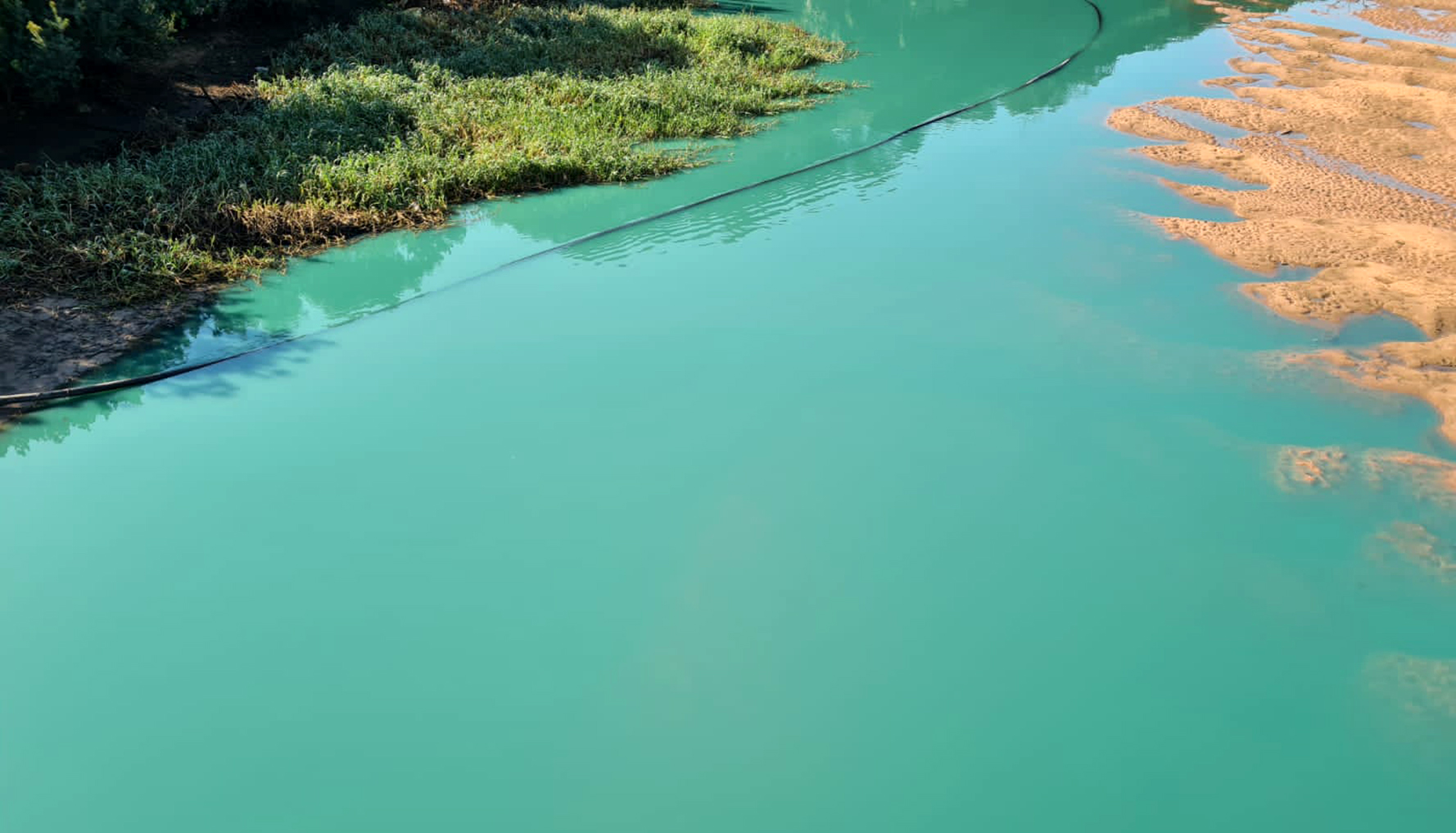
The Umhlanga Lagoon turned turquoise in the aftermath of the pesticide and chemical leak. (Photo: Supplied)
According to the preliminary compliance report, the national water and environmental management acts both recognise that “any unlawful, intentional or negligent conduct” that results in serious pollution or degradation of the environment or water resources is considered to be criminal conduct.
“Further investigation is required to determine whether UPL, as a result of its failure to comply with specific legal requirements (either in terms of Nema or other relevant legislation), acted negligently by creating a point source of pollution which resulted in significant environmental impacts, despite the fact that the fire was started by other individuals…
“Had the relevant licences been applied for, the environmental assessment processes that would have been required may have identified risks that could have been avoided, or could have been guarded against,” said the report.
“The desirability of storing large quantities of agricultural chemicals in close proximity to people and sensitive environments would have been evaluated. Bypassing these processes, no doubt, contributed to the seriousness of the pollution that resulted.”
What were some of those licences or permissions that UPL allegedly “bypassed” or neglected to obtain?
In 2005, the Major Hazard Installation (MHI) Regulations were amended to protect the safety of workers (and communities) living near any facility that stores substances that have the potential to cause a “major incident”.
The regulations also require an independent risk assessment at all existing or new MHIs every five years, as well as formal emergency response plans to provide for the safety, evacuation or sheltering of workers – as well as the public.
According to the compliance report: “It is the view of the investigative team that UPL may not have undertaken the necessary (risk) assessment.”
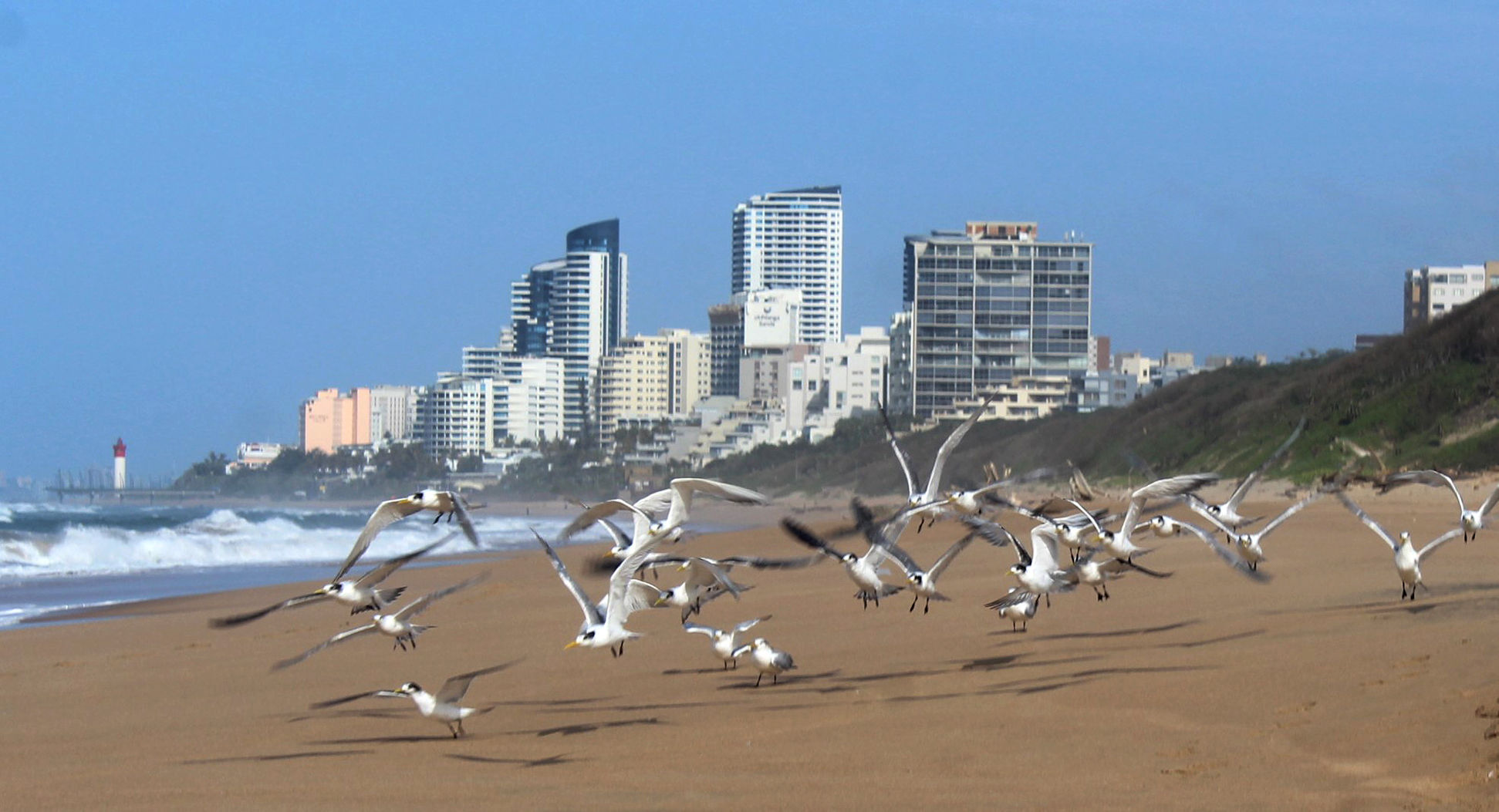
A flock of terns on the beach north of Umhlanga. The lagoon remains mostly devoid of fish and other aquatic life. (Photo: Tony Carnie)
“It is the view of the Department of Employment and Labour (based on the information currently available) that the above regulatory requirements were not met and may even have contributed to the severe damage that was observed, since the emergency response plan, in particular, could not be activated. These aspects will therefore be taken up in the criminal investigation.”
Since then, a human health risk assessment commissioned by UPL has suggested that residents living in the immediate vicinity now face increased risks of cancer, heart disease and other health impacts due to the toxic dust particles they inhaled while the warehouse burnt or smouldered.
In order to store anything more than 500m3 of chemicals and other dangerous goods, the company was also required to obtain environmental authorisation under Nema.
During the authorisation process, officials and experts would have assessed the readiness of the facility to respond to an emergency and to mitigate the risks.
As a further safeguard, UPL was also required to obtain a Scheduled Activities Permit (SAP) from the eThekwini Municipality. There was no evidence that these requirements had been complied with.
The report then makes a rather damning preliminary finding that UPL had shown a “general disregard for the need for compliance with relevant legislation”.
“It reveals a pattern which could be interpreted as a general lack of willingness to comply with the law. Read with its failure to obtain environmental authorisation for the storage of goods, supports the notion that this conduct is the underlying cause for the serious pollution that followed the fire in the warehouse. The cause of the fire is irrelevant to this part of the inquiry.
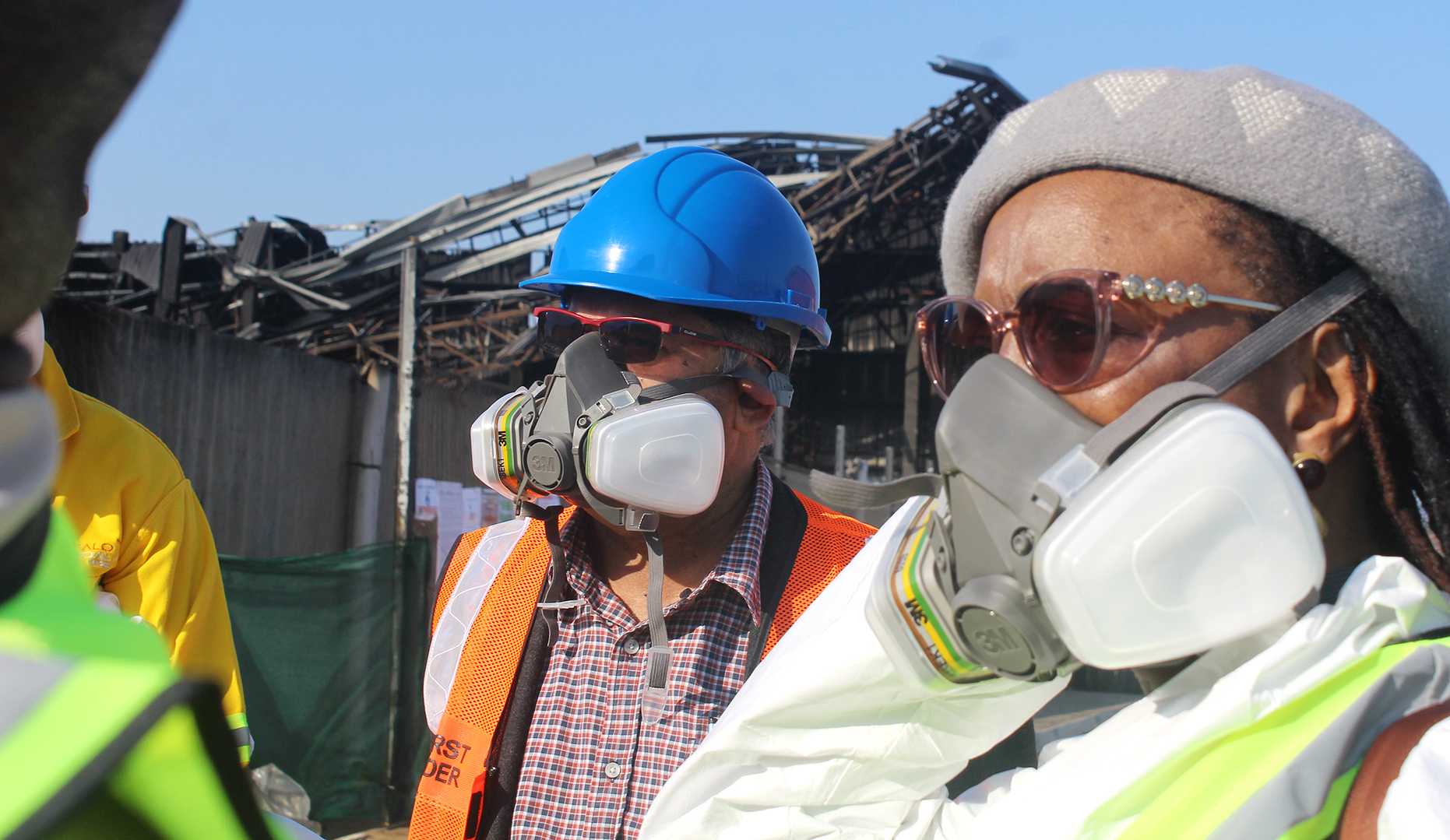
Members of Parliament Narend Singh (left) and Simphiwe Mbatha wear gas masks while inspecting the remnants of the UPL warehouse. (Photo: Tony Carnie)
“At a factual level, eThekwini is uncertain whether the chemicals were manufactured, mixed or decanted on-site. Further investigations must be conducted in this regard, to determine if the on-site activity conducted by UPL may fall within the precluded use,” the report states, further noting that investigators would also probe whether UPL had registered certain chemical products for sale in South Africa.
So, what has happened to the investigation and the criminal charges?
According to the national Department of Forestry, Fisheries and Environmental Affairs (DFFE), the docket was handed over to the Director of Public Prosecutions more than 14 months ago for a decision on whether to prosecute the company.
Department spokesperson Peter Mbelengwa said he was unable to comment on whether the NPA was in discussions with UPL’s legal representatives to negotiate a plea and sentence settlement in terms of Section 105A of the Criminal Procedure Act.
“The DFFE has not been informed by the DPP that a 105A plea and sentence agreement has been tabled by UPL.”
Responding to queries from Daily Maverick, the Director of Public Prosecutions in KwaZulu-Natal, advocate Elaine Zungu, said: “The docket was referred to the NPA in October 2021. The prosecutors have been guiding the investigations on the matter.
“An investigation into such a matter requires expert evidence and therefore will take time to deal with. The prosecutors must ensure that there is evidence under oath which establishes a crime and thereafter that such evidence links someone to committing the offence. Prosecutors are always accountable for their decisions and therefore they must ensure that the decision is correct.”
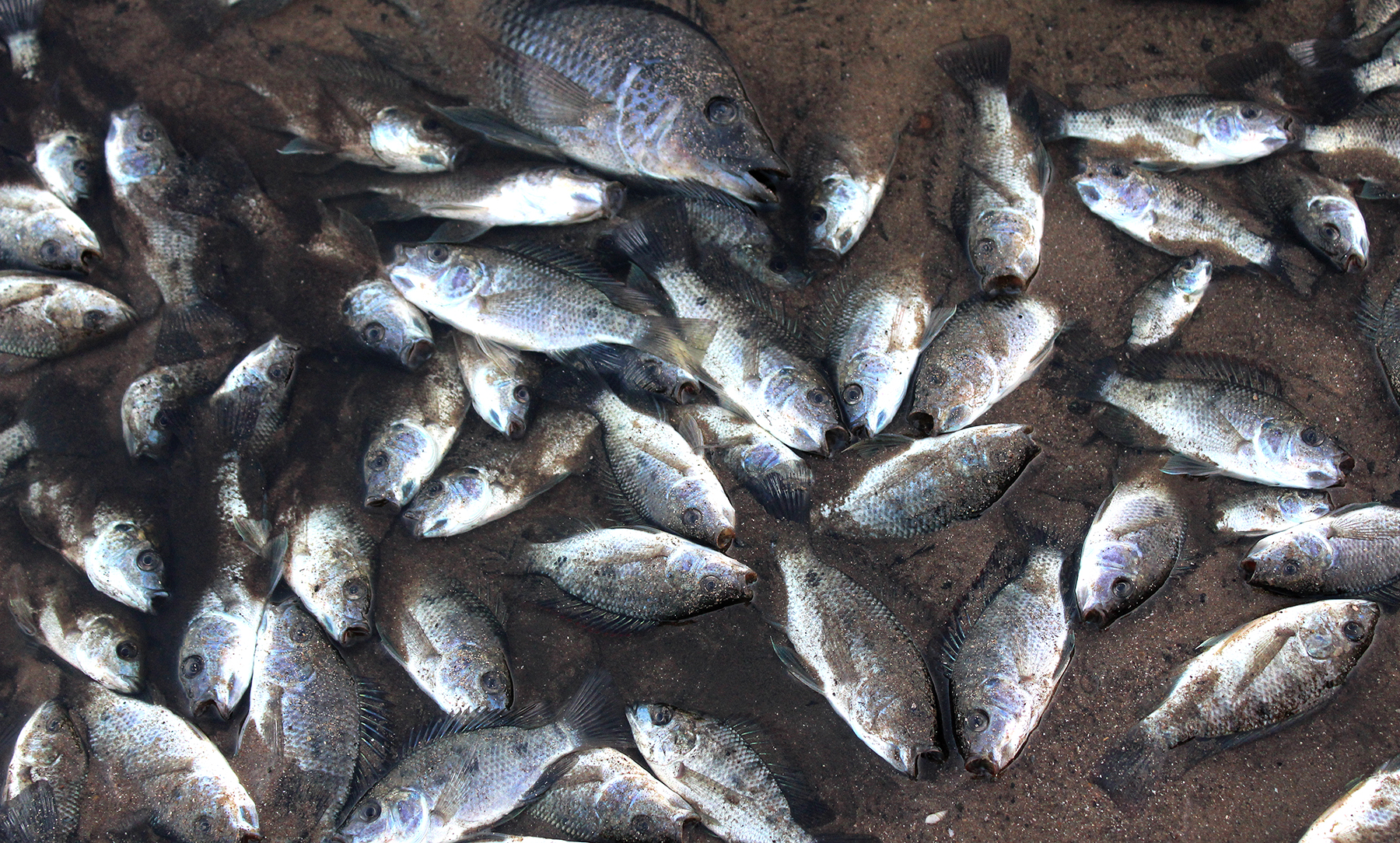
Nearly 4 tonnes of dead fish were removed from the Umhlanga estuary after the UPL chemical spill. (Photo: Ben Carnie)
Daily Maverick also invited UPL to respond to recent speculation that it was considering a plea and sentence agreement. If not, what was the company’s position on defending itself in a criminal trial?
Avoiding any reference whatsoever to criminal charges, Danie Marais, UPL regional head of marketing and business development, responded: “We remain grateful to the environmental authorities in South Africa for assisting us in our efforts following the events that occurred in July 2021.
“While these unfortunate events were beyond our control, we take seriously our responsibility for our products and have worked committedly to contain the spillage of products, eliminate them from the environment, and support the affected communities.
“In the last two years, UPL has invested millions of rands to lead a wide-reaching environmental rehabilitation and remediation programme, and we are reassured that those efforts are making significant steps towards a comprehensive restoration of local biodiversity, vegetation and wildlife.
“Our team continues to build on the efforts undertaken to date and will continue to work closely with all authorities.”
But it also seems that UPL wishes to put the matter behind it as speedily as possible.
Just last week, UPL published another glowing account of its activities across the continent in its latest Africa Sustainability Impact Report – which managed to avoid a single reference to the environmental impacts of the Durban inferno.
Jai Shroff, the company’s global CEO, declares that the report is UPL’s contribution to “celebrating partnerships and collaboration, to transparency and openness in the success of our interventions, to measuring and monitoring our impact.
“I am so proud of the examples of outcomes that this report has collected,” Shroff said.
Yet the bean counters and attorneys at UPL headquarters in Mumbai are nevertheless watching developments.
Buried within the company’s consolidated financial statements for the year ended 31 March 2022, there is a single paragraph in fine print estimating some of the preliminary losses to the company’s bottom line due to the Cornubia fire.
“Management has estimated loss of inventory and clean-up cost amounting to approximately ₹ 596 Crores [R1.3-billion). Out of which, management estimates ₹ 153 Crores [R352-million] are beyond the insurance policy limits, hence booked as expenses under exceptional items.
“Management has taken all relevant steps of informing the insurance company about this incident and are going through the process to claim the loss of inventory and clean-up cost and expect the same to be covered under existing insurance policies. “
Currently, it stated, “There are no legal claims or proceedings against UPL group in relation to the incident.”
Amid this lack of clarity on the status of the case, it may be worth recalling the seemingly prescient comments by Heinz de Boer, a Democratic Alliance member of the KZN provincial legislature.
At a meeting in Pietermaritzburg three months after the fire, De Boer remarked: “I think this is going to be a marathon race against UPL and their attorneys.” DM



















 Become an Insider
Become an Insider
This is a national disaster – how do we let them get away with it? South Africans contend with so many illegal and unethical issues that our heads are spinning. We should be up in arms about this and all we can do is sit back and shake our heads “another criminal with ANC sanction”.
Once again the NPA has proved not to live up to its institutional tasks/duties😠